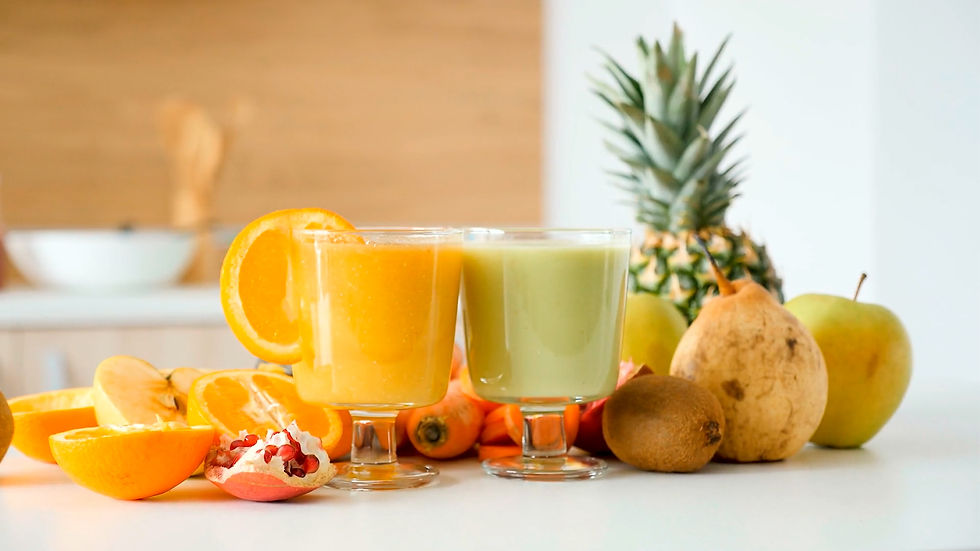Your vegetables can be dangerous! Do you need to avoid vegetables with Oxalate?
- L'équipe NovAdn

- May 25, 2022
- 4 min read
As followers of vegetable food and a healthy diet, we regularly resort to green vegetables and certain edible leafy plants; however, some of these products contain oxalic acid (oxalate or ethanedioic acid) which, when consumed excessively, can be very dangerous.

The consumption of certain vegetables can threaten people who suffer from a number of inflammatory pathologies.
What is oxalate ?
Oxalic acid is a component that is found naturally in the human body and which makes it possible to fix iron or calcium. Present in the bloodstream at low concentrations, it is synthesized directly by the body or comes from our diet.
Oxalic acid is found in various foods that you eat frequently, including vegetables and some fruits.
What foods are high in oxalate?
Spinach, buckwheat, rhubarb and amaranth, for example, contain a high oxalate content, but so do strawberries, raspberries and figs. These various products can be consumed quite normally, in healthy people. In this case, the oxalate combines with minerals and forms complexes such as calcium oxalate and iron oxalate.
This process occurs in the colon, but can also occur in the kidneys and urinary tract.
However, if you suffer from certain specific chronic pathologies, it is necessary to monitor your intake of these various products, even if it means completely eliminating them from your eating habits.
What are the risks associated with a high consumption of foods rich in oxalate?
Truly, a high intake of oxalates is linked to a high risk of kidney stones, and even poisoning in some cases.
1. Oxalate leads to decreased absorption of minerals:

Some nutrition experts refer to oxalic acid as an anti-nutrient because by binding to them, the oxalate prevents our body from taking advantage of these elements. Thus, consuming large amounts of foods rich in oxalic acid over a long period of time can lead to nutritional deficiencies, including calcium, magnesium and iron deficiencies.
2. Oxalate can cause kidney stones:

Oxalic acid forms crystals by binding with certain minerals. The latter are evacuated by the urinary route, but in the presence of a high content of oxalates, there will be formation of aggregates of various sizes, which can lead to occlusion of the urinary tract. However, large stones are the most disabling, and cause very painful symptoms.

As you can see, if you suffer from stones, gout, or rheumatic pathology, we advise you to absolutely avoid foods rich in oxalates. Promote a diet that contains calcium, drink plenty of water, diversify your consumption of fruits and vegetables, and ask your doctor for advice.
Solutions ?
If you have particular physiological or pathological conditions, consider the following points but consult your healthcare practitioner to follow the correct approach.
Here are some very specific steps to follow, carried out in 2015 by the Province of British Columbia, in conjunction with Dietitians of Canada and The Global Resource for Nutrition Practice.
1. Drink plenty, especially water. This is the most important thing that you can do to reduce the risk of developing other kidney stones.

Aim to drink at least 2.5-3 liters (10-12 cups) a day.
If you are not used to drinking so much, start by adding one glass a day to your usual consumption; gradually increase the number of glasses you drink.
Don't increase your intake of sugary drinks like pop, fruit drinks, and specialty coffees and teas. These drinks can increase the risk of kidney stones.
Follow these tips to drink more:
Have a bottle of water handy throughout the day.
Add a little lemon, lime, watermelon juice or mint leaves to your glass of water to give it a refreshing taste.
2. Limit the amount of salt (sodium) you eat.

Choose fresh fruits and vegetables, whole grains, milk and yogurt, small portions of unseasoned meat, fish or poultry, unsalted nuts and seeds.
Note :
-If you have had calcium oxalate stones, limit your daily intake of nuts, as they are high in oxalate.
Reduce your intake of packaged or ready-to-eat foods, fast meals and restaurant meals, as they are often high in sodium.
Replace added salt used at the table or in cooking with herbs, spices, seasonings, lemon or lime juice, garlic, ginger or pepper.
The steps below apply to people with calcium oxalate stones or calcium phosphate stones:
3. Eat calcium-rich foods instead of taking supplements.
Calcium-rich foods include:
milk and other dairy products
calcium-added foods and beverages, such as calcium-added tofu, calcium-added soybeans, rice-based beverages, and orange juice
canned fish with bones
Aim for the following daily calcium intake, and limit yourself to it:
adults 19 to 50 years old – 1000 mg
women 51 to 70 years old – 1200 mg
men 51 to 70 years old – 1000 mg
adults over 70 – 1200 mg
4. If you have had calcium oxalate stones, limit your intake of oxalate-rich foods (>10 mg per serving).

Many of these foods are healthy food choices, so don't avoid them entirely.
When you eat oxalate-rich foods, accompany them with calcium-rich foods. (See point 4 above for a list of calcium-rich foods.)
Foods high in oxalates (>10 mg per serving) include:
Spinach, okra, beets (root and leaves), Swiss chard.
Star fruit, rhubarb, dried figs.
Peanuts, tree nuts (pecans, almonds, hazelnuts).
Soy (including tofu and soy-based meat alternatives).
Black tea.
Wheat bran.
Buckwheat.
Dark chocolate.
Note: The amount of oxalate may vary depending on where the product was grown, time of year, transportation, processing, type of crop (organic or traditional), cooking.
4. Limit your vitamin C intake.

Amounts exceeding 1 gram/day or more are likely to cause more oxalate to be produced in the body.
Do not forget
Your health belongs to you!
Did you like this article ? be sure to subscribe and contact us
for a consultation to reclaim your body here




Comments